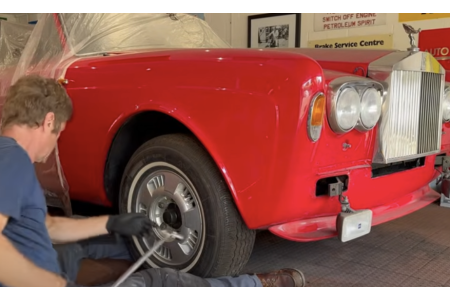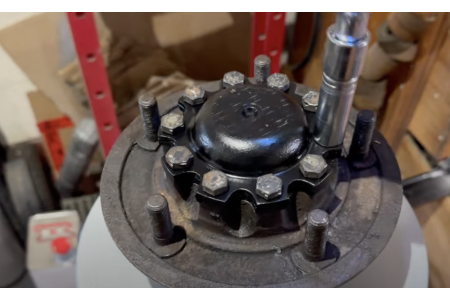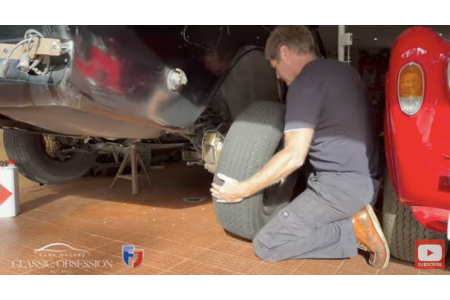Restoring Another Rolls-Royce Corniche! | Brakes Part 2 | Classic Obsession with Gary Mavers
Classic Rolls-Royce ownership comes with its challenges, and in this episode of Classic Obsession, Gary Mavers continues restoring his Rolls-Royce Corniche, focusing on its hydraulic suspension and braking system. With new spheres, brake pipes, and accumulators from IntroCar, Gary gets stuck into the intricate task of ensuring the Corniche stops as smoothly as it glides.
1. The BMW E46 Spring Failure & What It Says About Modern Car Quality
Before diving into the Rolls-Royce restoration, Gary briefly revisits his BMW E46, where yet another suspension spring has snapped—this time while sitting idle on the driveway.
- Frequent issue: Owners report repeated failures, with one person replacing 12 springs across two cars in six years.
- Declining BMW quality: Gary criticizes how cost-cutting in the early 2000s led to weaker components.
- Safer replacement option: Instead of traditional spring compressors, Gary opts for a pre-assembled shock and spring unit, making installation far safer and easier.
With the BMW parked for now, it’s time to tackle the Rolls-Royce Corniche’s complex hydraulic system.
2. Rolls-Royce Corniche: Replacing Brake Spheres & Fixing Leaks
Unlike most cars, the Rolls-Royce Corniche suspension and brakes are powered by hydraulic spheres rather than conventional dampers and master cylinders. These spheres store high-pressure hydraulic fluid, ensuring a smooth ride and powerful braking.
Having removed the old, worn-out spheres in a previous episode, Gary installs a brand-new set supplied by IntroCar.
“A fresh set of spheres makes all the difference in these cars. With a fully pressurized system, braking and suspension performance improves dramatically.”
But before bleeding the system, there’s a major problem to fix.
3. Fixing a Hard-to-Reach Brake Pipe Leak
Gary first tackles a leaking rear brake pipe, which, as usual, is nearly inaccessible. The issue is made worse by thick underseal covering the pipes, making them impossible to remove cleanly. Rather than attempting to strip it all off, he cuts the old pipe and carefully bends a new one to match its path.
Because it runs over the rear axle, it has to be shaped in sections before being refitted. Gary temporarily cable ties the new pipe to the old one for added stability, planning to revisit the full underbody restoration later.
With the leak repaired, it’s time to move onto the rear suspension spheres.
4. Replacing the Rear Accumulators
The rear suspension accumulators sit in an awkward, cramped location, blocked by the convertible soft-top frame. To gain access, Gary carefully lifts the frame, but even then, space is incredibly tight.
Before removing the old accumulators, he checks for remaining pressure using the system’s bleed nipple. Although there’s barely any pressure left, he takes precautions by placing a jack under the axle, ensuring the car won’t drop unexpectedly.
One of the rear spheres is seized in place, requiring an hour of struggle, a cold chisel, and brute force to free it. Once removed, the new ones are fitted, ensuring a fresh and fully functional hydraulic system.
“That was way harder than it should’ve been, but at least the new ones are fitted and will last for years.”
5. Preparing to Bleed the Hydraulic System
With the new spheres installed and leaks repaired, the final step is to bleed the hydraulic system—but there’s one last issue: The Hard-to-Find LHM Filling Adapter
The final challenge is refilling and bleeding the system, which requires a rare LHM filling adapter—a small yet essential part that connects the reservoir to the high-pressure hydraulic system.
These adapters originally came with the car, but over time, they’ve become almost impossible to find. Castrol once made a version with an attached bottle, but they’re now obsolete, with used ones occasionally surfacing on eBay for hundreds of dollars.
Thankfully, IntroCar was able to track one down, ensuring Gary can move forward with bleeding the entire system in the next episode.
“IntroCar came through again—these adapters are hard to find, but they managed to source one for me.”
With everything in place, all that’s left is to bleed the system and see if the braking performance is restored.
Looking Ahead: Final Brake System Bleed & Test Drive
With the new accumulators, repaired brake lines, and fresh hydraulic fluid, the Rolls-Royce Corniche is almost road-ready. But before it can safely return to the road, the entire hydraulic system must be bled and pressurized.
In the next episode, Gary will:
✅ Bleed the complete brake system to ensure proper pressure.
✅ Inspect for final leaks and test the hydraulic function.
✅ Take the Corniche for its first test drive with the fully refreshed suspension and braking system.
If you’re a Rolls-Royce or Bentley owner, let us know in the comments if you’ve tackled similar hydraulic suspension repairs!
IntroCar & Classic Obsession
IntroCar is the leading international supplier of Rolls-Royce & Bentley parts, providing specialists and enthusiasts with expert knowledge and an unmatched range of original, aftermarket, recycled, and reconditioned components. We are proud to support Gary Mavers of the Classic Obsession YouTube channel, supplying the essential parts for his Rolls-Royce Corniche restoration projects. While Gary works on a variety of classic cars, his meticulous approach to maintaining and restoring Rolls-Royce models aligns with our commitment to keeping these iconic vehicles on the road.




















